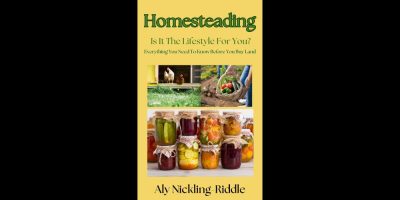
This Barrie 360 article is brought to you by United Lumber Home Hardware
Butterflies are captivating creatures, dancing through gardens with their vibrant colours and unique patterns. But they aren’t just nice to look at, they also play a vital role in the ecosystem as pollinators, ensuring the health of plants and the continuation of a thriving natural world.
If you want to transform your outdoor space into a butterfly paradise, this comprehensive guide will equip you with all the knowledge you need. From choosing the perfect location to selecting the most enticing plants, we're here to help you create a vibrant haven buzzing with butterfly activity.
Why become a butterfly gardener?
There are tons of reasons to consider creating a butterfly garden. Here are just a few:
1. A big help for pollinators
Butterflies play a crucial role in pollination, transferring pollen between plants which helps them reproduce and thrive. By providing a food source for butterflies, you're directly contributing to a healthy ecosystem.
2. A touch of beauty
Witnessing butterflies fluttering amongst colorful blooms adds a touch of magic to any garden. Their vibrant wings and delicate movements create a peaceful and mesmerizing spectacle that can help you relax and better appreciate the world around you.
3. A learning experience
Watching butterflies up close is a captivating experience for children and adults alike. A butterfly garden fosters a love for nature and allows you to witness the wonders of metamorphosis firsthand.
4. Low-maintenance and sustainable
Butterfly gardens are designed to be self-sustaining ecosystems. Once established, they require minimal maintenance, making them a perfect choice for busy individuals.
Planning your butterfly garden
When creating a butterfly garden, planning is a crucial step. That way, you can ensure your garden is perfectly suited to the creatures you hope to attract. Here are some key considerations you should think about when creating your colourful oasis:
Location, location, location!
The first step in creating a butterfly haven is choosing the right spot.
Sun exposure: Butterflies are cold-blooded creatures and require sunlight to warm their wings for flight. Select a location that receives at least 6 hours of direct sunlight per day, preferably in the morning.
Shelter from the elements: While butterflies need sunshine, they also appreciate protection from strong winds and heavy rain. Consider planting shrubs or small trees on the edges of your garden to provide a windbreak and a safe haven during downpours.
Accessibility for you: While it's important to prioritize the butterflies' needs, don't forget about yourself! Choose a location that allows you to easily access and admire your flourishing garden.
Create a butterfly buffet
The cornerstone of any butterfly garden is the selection of plants. Here's what you need to know:
Nectar is necessary: Butterflies feed on nectar, a sugary solution produced by flowers. Opt for a variety of plants that bloom throughout the season, ensuring a continuous supply of food for your fluttering guests.
Diversity is key: Plant a wide range of flowers in various shapes, sizes, and colors. Butterflies are attracted to bright colors, particularly red, yellow, orange, purple, and pink. Some favorite butterfly food sources include milkweed, coneflowers, butterfly weed, asters, lilies, and lantana.
Caterpillars need to eat too: Butterflies lay their eggs on specific plants (called host plants). These serve as food for the developing caterpillars. While these host plants may not be the most visually appealing, they're essential for the butterfly lifecycle. Common host plants include milkweed, parsley, and dill.
- Milkweed for Monarchs
- Parsley for Swallowtail butterflies
- Dill for Black Swallowtail butterflies
We’ll take a more in depth look at the flowers you should choose in just a bit. But first, let’s make sure you have all of the other elements you need to create a world the butterflies will love.
Other essential elements for Your butterfly garden
Water source: Butterflies need water not only for drinking but also to regulate their body temperature. Provide a shallow dish filled with clean water, pebbles or marbles to prevent drowning, and consider adding a mister for extra humidity.
Puddling spots: Butterflies extract essential minerals from the ground through a process called mud puddling. Create a small, sandy area in your garden that stays moist to provide these vital nutrients.
Overwintering havens: Butterflies need shelter to survive the colder months. Include evergreen shrubs, tall grasses, and leaf litter piles in your garden to provide safe overwintering spots.
Maintaining Your Butterfly Paradise
Skip the pesticides: Pesticides not only kill butterflies but also harm the insects and other small creatures that form part of the garden's ecosystem. If pest control is necessary, opt for organic pest control methods and encourage natural predators like ladybugs to keep harmful insects in check.
Deadhead: Regularly remove spent flowers to encourage continuous blooming and to maintain the overall tidiness of your garden.
Let nature take its course: While some tidying is necessary, avoid being too meticulous. Fallen leaves and decaying plant material provide shelter for overwintering butterflies and other beneficial insects.
Types of butterflies in Ontario
There are 5 main categories of butterflies in Ontario.
- Brushfoots - These butterflies have four walking legs and two hairy front legs that look like brushes. This category of butterflies has more species than any other and includes the Monarch.
- Swallowtails - These butterflies are known for their distinctive tails that resemble the tails of swallows. Examples include the Black Swallowtail and Canadian Tiger Swallowtail.
- Whites & Sulphurs - This family includes white or yellow butterflies, such as the Cabbage White and Clouded Sulphur.
- Gossamer-winged butterflies - These are smaller butterflies with delicate wings, often featuring blue or orange colors. Examples include Spring Azure and Eastern Tailed-blue.
- Skippers - These butterflies have a rapid, skipping flight pattern and often hold their wings folded together at rest. Examples include the Common Wood-Nymph and Silver-spotted Skipper.
To attract a greater variety of butterflies, you will want to plant a variety of flowers to act food sources and host plants.
What flowers will attract butterflies?
Here's a list of 25 flowers that will not only brighten up your garden with vibrant colors but will also attract a fluttery array of butterflies in Ontario.
1. Purple coneflower (Near native)
A classic pollinator favorite, this daisy-like flower with spiky purple centers comes in various colors and attracts butterflies, bees, and other beneficial insects.
2. Purple loosestrife
Tall spikes of purple flowers make a bold statement in the garden and attract butterflies, bees, and hummingbirds.
3. Phlox (Native)
These summer-blooming perennials come in various colors and feature clusters of fragrant flowers that attract butterflies and other pollinators. Moss phlox, downy phlox, wild sweet William and wild blue phlox are all excellent choices.
4. Yarrow
This flat-topped, daisy-like flower comes in various colors and attracts butterflies, bees, and other beneficial insects.
5. Sunflowers (Native)
These cheerful giants with large, yellow flower heads are a favorite among butterflies, bees, and other pollinators. Woodland and giant sunflowers are great native choices.
6. Wild bergamot (Native)
This fragrant perennial with clusters of pink, lavender, or red blooms is a magnet for butterflies, hummingbirds, and bees.
7. Blazing star (Native)
Showy spikes of purple flowers make this a stunning addition to any garden. It attracts butterflies, bees, and other pollinators throughout the summer. Only three species of blazing star are native to Canada: rough, slender and dense blazing star.
8. Aster (Native)
Asters come in a variety of colors, including pink, purple, and white, and bloom in the late summer and fall. They are a valuable food source for butterflies, especially migrants like monarchs. There are many native species of aster, with popular options being the new England aster, swamp aster, heath aster, and smooth aster, among others.
9. Joe-pye weed (Native)
This tall, late-blooming wildflower has large clusters of purple flowers that attract butterflies, bees, and other pollinators.
10. Senna (Native)
This fast-growing wildflower with yellow, pea-like flowers attracts butterflies, bees, and hummingbirds.
11. Violets
Violets are a tricky one as many are invasive to Canada. There are, however, native species that make a great addition to your garden like the Canada, bog, woolly blue, and birdfoot violet, among others.
12. Goldenrod (Native)
These tall, late-blooming perennials with golden yellow flower clusters are a valuable late-season food source for butterflies, especially monarchs. There are over 25 species of goldenrod that are native to Ontario including: bluestem, stiff, upland white and grass-leaved goldenrod.
13. Rudbeckia (Native)
Commonly called Black-Eyed Susan, this daisy-like flower with a dark brown center attracts butterflies, bees, and other pollinators throughout the summer.
14. Bee balm (Native)
Similar to wild bergamot, bee balm features clusters of fragrant flowers in various colors that attract butterflies, hummingbirds, and bees.
15. Columbine (Native)
Delicate, nodding flowers in shades of red, yellow, blue, and purple make columbine a favorite among butterflies and hummingbirds. 5 species of columbine are native to Canada, 2 in Ontario, including wild and smallflower.
16. Lilac
These fragrant spring-blooming shrubs come in various colors and attract butterflies, bees, and even hummingbirds.
17. Catmint
This low-growing perennial with lavender flowers is a magnet for butterflies, bees, and even cats (hence the name).
18. Echinopsis
This day-blooming cactus with vibrant red or orange flowers is a surprising favorite among butterflies. Easter lily cacti are a good choice though they will need to be moved inside or covered in the winter.
19. Blanketflower
Showy, daisy-like flowers in shades of yellow, red, and orange attract butterflies, bees, and other pollinators.
20. Butterfly bush
As the name suggests, this vigorous shrub with long spikes of purple, pink, or white flowers is a butterfly magnet.
21. Coreopsis
These cheerful yellow flowers bloom all summer long and are a favorite among butterflies and other pollinators. They are easy to grow and low-maintenance, making them a perfect addition to any garden.
22. Zinnias
Zinnias are another easy-to-grow flower that attracts butterflies. They come in a wide range of colors and sizes, and they bloom all summer long.
23. Hollyhock
Hollyhocks are tall, stately plants with large, single or double flowers. They come in a variety of colors, including pink, red, yellow, and white. Butterflies love the nectar in hollyhock flowers.
24. Lavender
Lavender is a fragrant herb that also attracts butterflies. Its purple flowers bloom in the summer and can be dried for use in sachets and potpourri.
25. Cosmos
These tall, daisy-like flowers come in a variety of colors, including pink, purple, and white. They are easy to grow from seed and bloom continuously throughout the summer, attracting butterflies and other pollinators.
Host Plants
As mentioned earlier, butterflies don’t only need flowers for nectar. Some plants are important to your butterfly garden because they act as host plants for caterpillars, providing shelter and food until they are ready to transform. Common host plants include:
Milkweed
An excellent source of nectar for many pollinators, milkweed is the only plant that monarch caterpillars will feed on. Butterfly milkweed and swamp milkweed are both excellent choices.
Legumes
Legume plants, like the Canada Milk-vetch, play host to spring and summer azures and other blue butterflies. They are also popular hosts for the silver spotted skipper.
Black-Eyed Susan and asters
Black-eyed Susan and asters are the preferred host plant of silvery checkerspot and northern pearl crescent.
Pussytoes and pearly everlasting
These two flowers are host plants for painted lady butterflies.
Carrot family
Plants in the Apiaceae or carrot family are popular for black swallowtail butterflies. While dill and parsley are common host plants, they are not native to Ontario. For native gardens, choose Canadian Hornwort, aniseroot, purplestem angelica, golden alexanders or cow parsnip.
These are just some of the many host plants that you can include as part of your butterfly garden.
Enhancing Your Butterfly Garden Experience
With a well-planned and well-maintained butterfly garden, you're sure to attract a variety of these fascinating creatures. But there are even more ways enhance your butterfly-watching experience:
Identify your visitors: Familiarize yourself with the common butterfly species in your region. Many resources are available online and in field guides to help you identify the butterflies fluttering through your garden. Observing their unique markings and behaviors can add another layer of enjoyment.
Citizen science: Consider contributing to citizen science projects by logging your butterfly sightings on platforms like Butterfly Watch or eButterfly. This valuable data helps researchers track butterfly populations and migration patterns.
Create a butterfly blind: Butterflies are naturally wary of humans. Construct a simple blind using branches, shrubs, or even a garden shed to allow you to observe them from a hidden vantage point without disturbing them.
Attract other pollinators: While butterflies are the stars of the show, your garden can become a haven for other pollinators like bees and hummingbirds. Include plants that cater to their specific needs, and you'll create a vibrant and thriving ecosystem.
Relax and enjoy: The most important aspect of having a butterfly garden is to simply sit back, relax, and enjoy the beauty it brings. The gentle flutter of wings, the vibrant colors of the flowers, and the peaceful hum of life will create a tranquil escape in your own backyard.
Educate others: Spread the word about the importance of butterflies and how to create butterfly-friendly gardens. Encourage your neighbors and community to join you in creating a network of butterfly havens.
Ready to start your butterfly garden?
By following these tips and taking an active role in butterfly conservation, you can make a significant contribution to the health and well-being of these magnificent creatures, ensuring their continued existence for generations to come.
So, why not get started today and transform your backyard into a vibrant butterfly sanctuary?
You'll be rewarded with a breathtaking display of nature's beauty while playing a vital role in protecting our precious ecosystem.
RELATED: 7 flowers that attract bees (and other pollinators) ...












